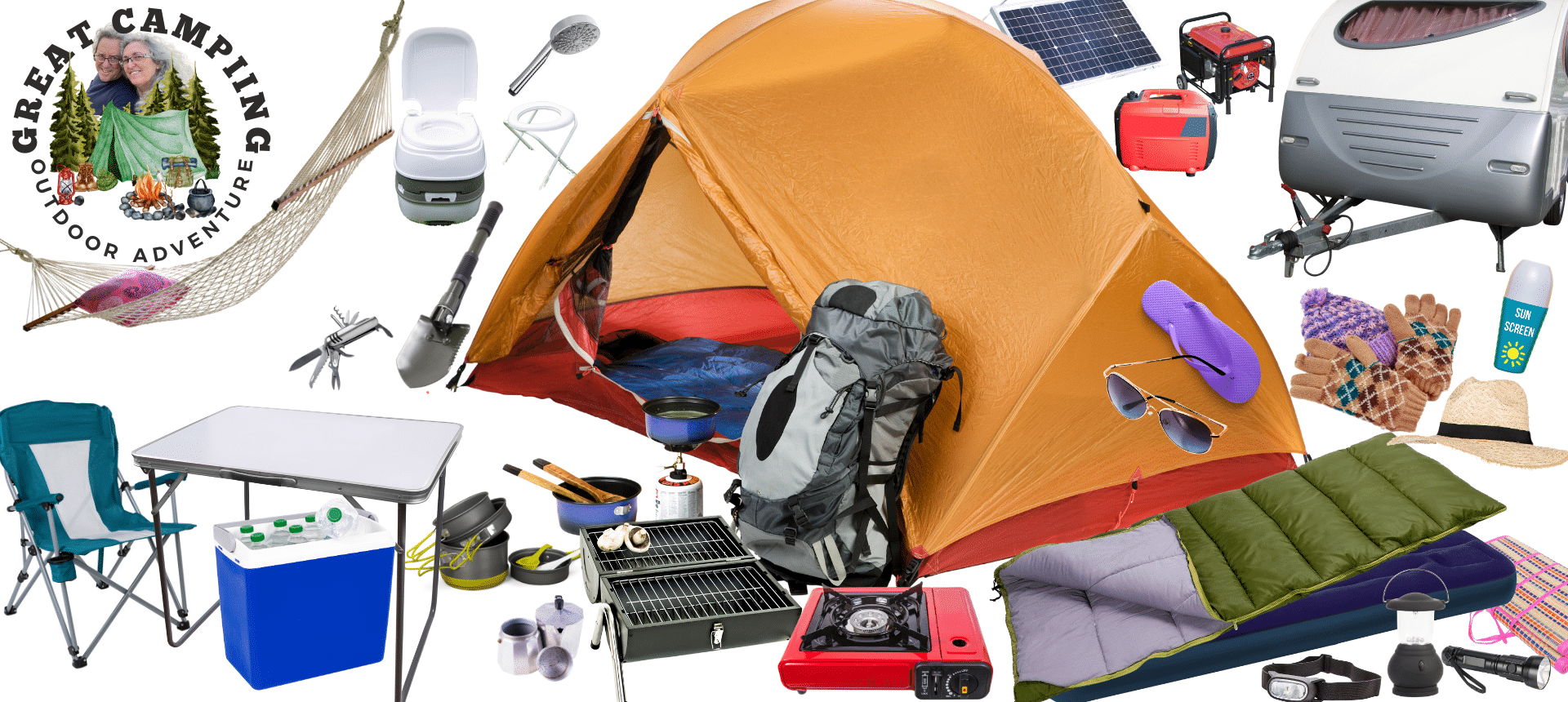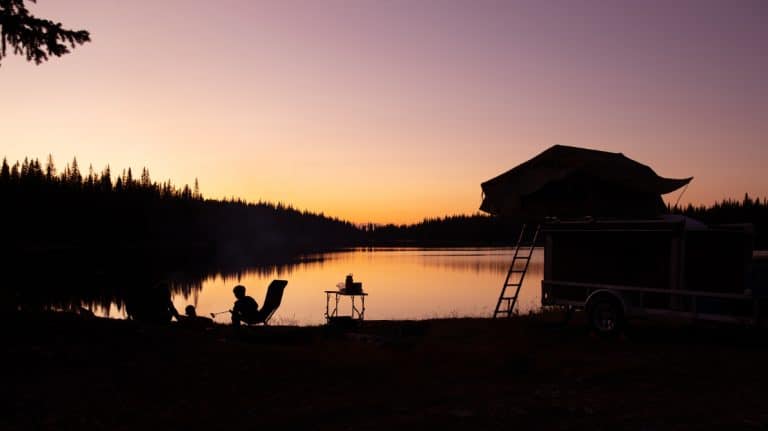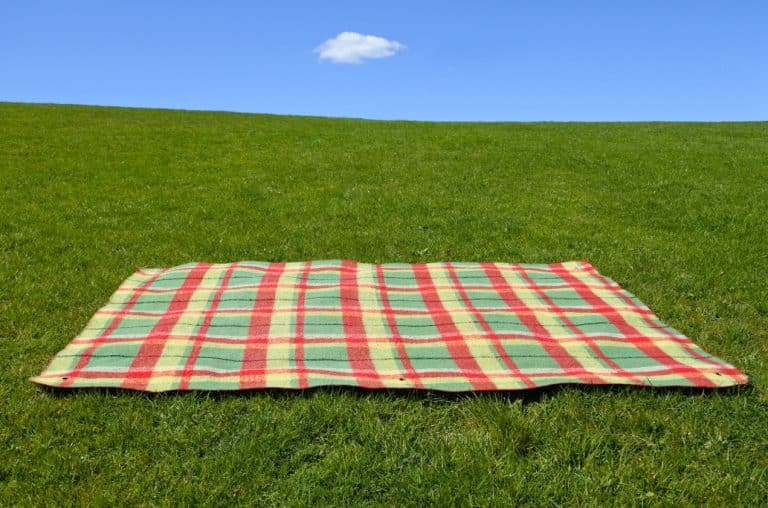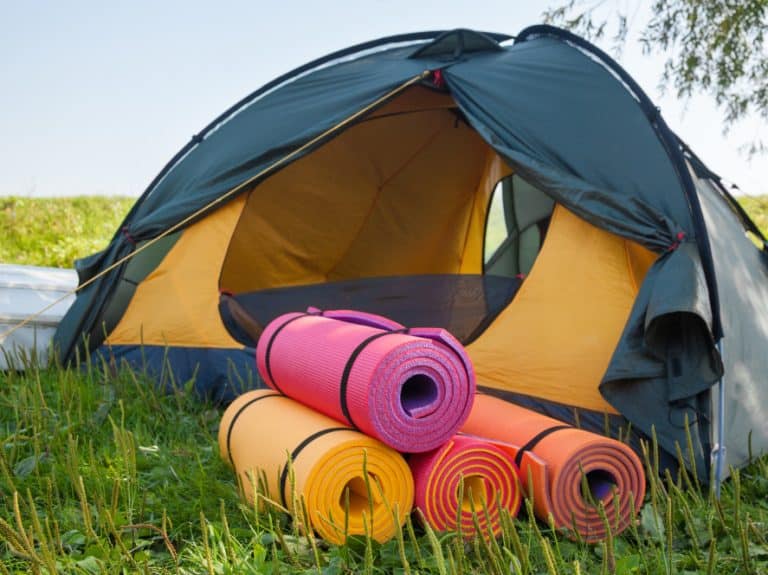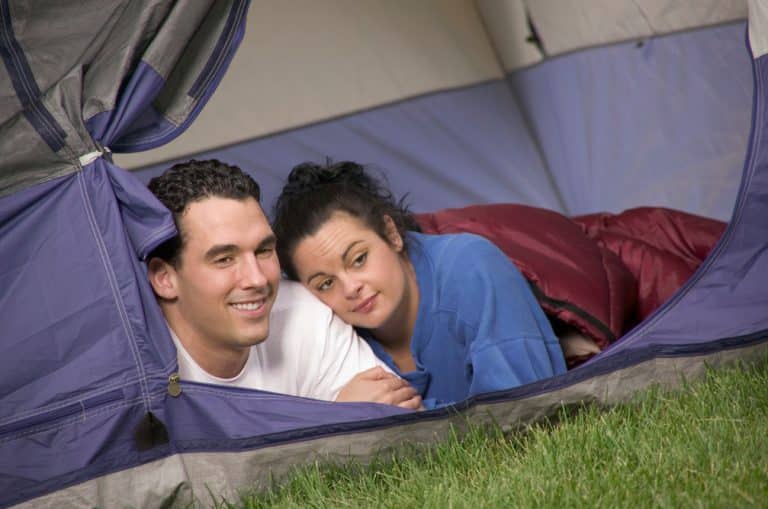Camping hammocks have gained significant popularity among outdoor enthusiasts in recent years. They offer a comfortable and convenient alternative to traditional tents while providing a unique way to experience the great outdoors. In this comprehensive guide, we’ll explore the ins and outs of camping hammocks, discussing various types, essential features, benefits, and tips for selecting the perfect one for your next adventure.
Types of Camping Hammocks
Single Hammocks: These hammocks are designed for one person and typically have a weight capacity of around 250-400 pounds. They are lightweight and compact, making them ideal for solo campers or backpackers.
Double Hammocks: As the name suggests, these hammocks are designed for two people and typically have a weight capacity of around 400-500 pounds. They provide more space and comfort but are also bulkier and heavier than single hammocks.
Hammock Tents: These specialized hammocks include integrated bug nets and rain flies, providing complete protection from the elements. They offer the convenience of a tent and the comfort of a hammock, making them perfect for extended camping trips or backpacking expeditions.
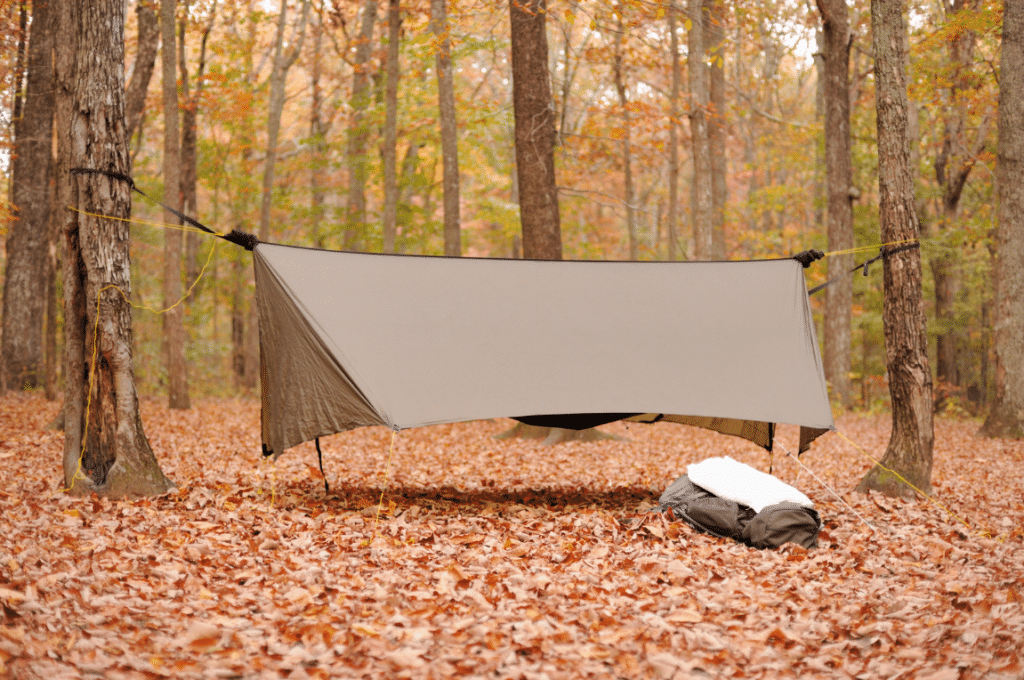
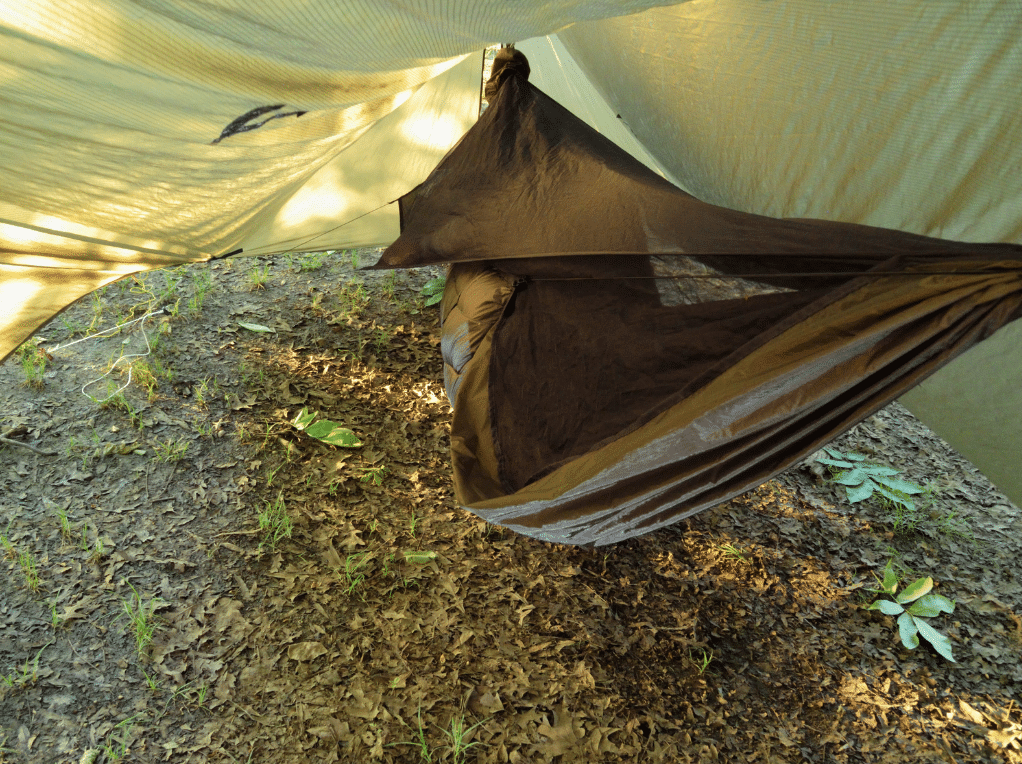
Essential Features to Consider
Material
Materials play a crucial role in the overall performance, comfort, and durability of a camping hammock. Understanding the differences between the various materials used in the construction of hammocks can help you make an informed decision. Here are some details about the common materials used in camping hammocks:
Nylon
Nylon is a popular material for camping hammocks due to its lightweight nature, strength, and quick-drying ability. There are several types of nylon fabrics used in hammock construction, with the most common being parachute nylon and ripstop nylon.
Parachute nylon is soft, breathable, and has a slight stretch, providing a comfortable surface for sleeping. Ripstop nylon, on the other hand, incorporates a reinforced grid pattern that prevents tears from spreading, making it more durable and resistant to damage.
Nylon hammocks are generally more suitable for backpacking and hiking trips due to their lightweight and compact properties. However, they may be less durable than polyester hammocks, especially when exposed to direct sunlight for extended periods, as UV rays can weaken nylon fibers over time.
Polyester
Polyester is another common material used in camping hammocks, known for its durability, resistance to UV damage, and mildew resistance. Compared to nylon, polyester is less prone to stretching, which means it can maintain its shape better over time. This can be beneficial for those who plan to leave their hammock set up for extended periods or use it frequently.
Polyester hammocks tend to be slightly heavier and bulkier than nylon hammocks, making them better suited for car camping or situations where weight and packability are not the primary concerns. They are also generally more abrasion-resistant, which can be an advantage in rougher terrain or when exposed to harsher weather conditions.
Blended Fabrics
Some camping hammocks use blended fabrics that combine the benefits of both nylon and polyester. These fabrics can offer a balance of lightweight, durability, and resistance to stretching and UV damage. However, they may also inherit some of the drawbacks of each material, so it’s essential to research the specific blend used and its performance characteristics.
When selecting a camping hammock, consider the material that best suits your camping style, preferences, and the environment you’ll be camping in. Both nylon and polyester have their advantages and disadvantages, so it’s essential to weigh these factors carefully to make the best choice for your needs.
Suspension System
The suspension system is a critical component of a camping hammock, as it directly affects the ease of setup, adjustability, and overall stability of the hammock. A good suspension system should be easy to set up, adjustable for different tree distances, and strong enough to support your weight comfortably. Here are some details about the common suspension systems used in camping hammocks:
Tree Straps
Tree straps are wide, flat straps made from durable materials like polyester or nylon webbing, which are designed to wrap around tree trunks without causing damage to the bark. They usually have multiple attachment points or loops sewn into them, allowing for easy adjustment of the hammock’s hanging height and tension. Tree straps are simple to set up, eco-friendly, and versatile. They can be used with various types of hammocks and are often compatible with different attachment hardware, such as carabiners or toggles.
Daisy Chain Straps
Daisy chain straps are a variation of tree straps that feature a series of sewn loops along the length of the strap. These loops create multiple attachment points for the hammock, making it easy to adjust the hanging height and tension without having to reposition the strap around the tree. Daisy chain straps are popular among campers for their ease of use and quick adjustability.
Whoopie Slings
Whoopie slings are adjustable rope or cord suspension systems that use a series of knots and a loop-to-loop connection to create an adjustable, lightweight, and compact suspension system. They are typically made from high-strength materials like Dyneema or Amsteel, which are strong and resistant to stretching. Whoopie slings are favored by ultralight backpackers for their minimal weight and packability, but they can be more challenging to set up and adjust compared to tree straps.
Cinch Buckle System
A cinch buckle system is a suspension option that combines tree straps with metal buckles that allow for easy and secure tension adjustment. To adjust the tension, simply pull the strap through the buckle or release it to loosen. Cinch buckle systems are easy to use, durable, and provide a secure hold without the need for knots. However, they can be slightly heavier than other suspension systems due to the metal hardware.
When selecting a camping hammock, consider the suspension system that best suits your camping style, experience, and preferences. Each system has its advantages and disadvantages, so it’s essential to weigh these factors carefully to make the best choice for your needs. Additionally, some hammocks come with suspension systems included, while others require a separate purchase, so be sure to check what’s included before making your decision.
Weight Capacity
Always consider the weight capacity of your hammock, especially if you plan to use it for two people or with additional gear.
Accessories
Camping hammocks can be enhanced with various accessories to make your outdoor experience more comfortable, enjoyable, and convenient. Some popular camping hammock accessories include:
Rainfly or Tarp
A rainfly or tarp is an essential accessory for any camping hammock setup, as it provides protection from rain, sun, and wind. These waterproof covers can be suspended above your hammock, ensuring you stay dry and comfortable in various weather conditions. Tarps come in different shapes, sizes, and materials, so you can choose one that best suits your needs and preferences.
Bug Net
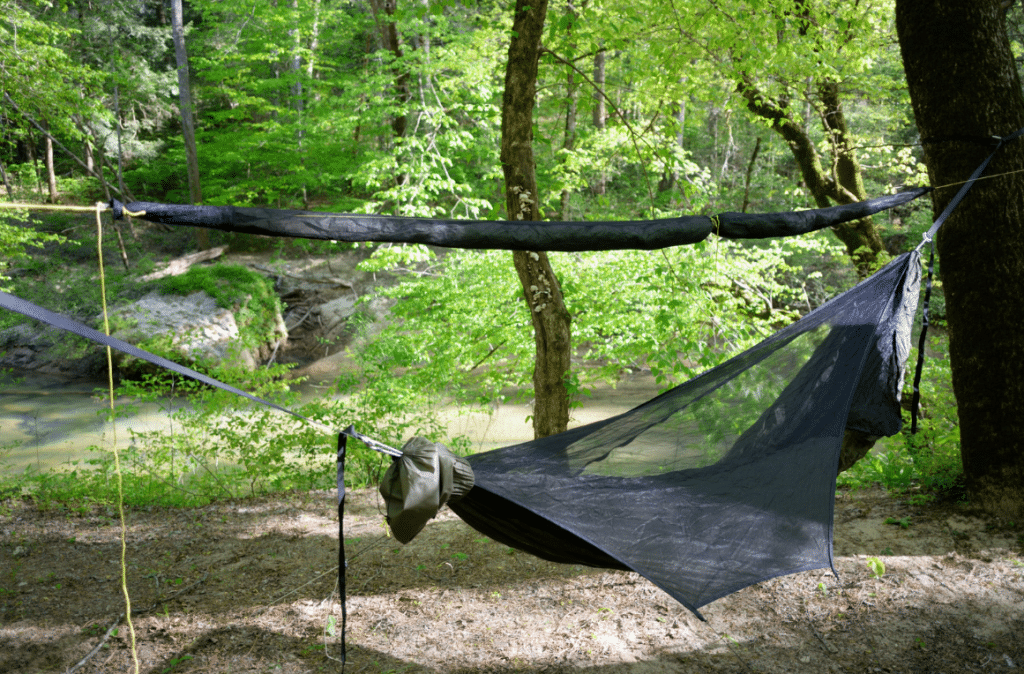
A bug net is a crucial addition to your hammock setup if you’re camping in an area with mosquitoes or other insects. Bug nets are designed to enclose your hammock, keeping bugs out while still allowing for proper ventilation. Some camping hammocks come with integrated bug nets, while others require a separate purchase.
Underquilt
An underquilt is a specially designed, insulated quilt that hangs beneath your hammock to provide insulation and warmth during colder nights. It helps prevent heat loss by creating a barrier between your body and the cold air, ensuring a comfortable night’s sleep. Underquilts come in various materials, insulation types, and temperature ratings, so choose one that suits the climate in which you’ll be camping.
Top Quilt or Sleeping Bag
A top quilt or sleeping bag is used in conjunction with an underquilt to provide insulation from the top. It can be a regular sleeping bag or a quilt specifically designed for hammock camping. Like underquilts, top quilts come in various materials, insulation types, and temperature ratings.
Hammock Stand
A hammock stand is a portable, freestanding structure designed to support your hammock when trees or other natural anchors are not available. Hammock stands come in various materials, such as steel, aluminum, or wood, and can be a convenient accessory for camping in areas without suitable hanging options.
Ridgeline Organizer
A ridgeline organizer is a handy accessory that attaches to the ridgeline of your hammock, providing storage for small items like your phone, glasses, or headlamp. These organizers typically feature multiple pockets, loops, or pouches, allowing you to keep your essentials within easy reach.
Carabiners or Hammock Hardware
High-quality carabiners or hammock-specific hardware can be essential for securing your hammock to the suspension system. They come in various materials, sizes, and weight ratings, so choose ones that are strong and durable enough to support your hammock’s weight capacity.
When selecting accessories for your camping hammock, consider the specific needs of your camping situation, personal preferences, and budget. Investing in the right accessories can greatly enhance your overall hammock camping experience, making it more comfortable and enjoyable.
Benefits of Camping Hammocks
Comfort: Many campers find hammocks to be more comfortable than sleeping on the ground in a tent. They provide a more natural sleeping position and eliminate the need for a sleeping pad.
Convenience: Hammocks are lightweight and easy to set up, making them perfect for backpacking trips or situations where you need a quick shelter.
Low Impact: By suspending above the ground, hammocks have a minimal impact on the environment. They prevent damage to vegetation and minimize the potential for disturbing wildlife.
Versatility: Hammocks can be used for relaxation during the day and sleeping at night, providing a multi-functional shelter for your camping experience.
Tips for Choosing the Perfect Camping Hammock
Consider your intended use: Will you be using your hammock primarily for backpacking, car camping, or just lounging around? Select a hammock that aligns with your specific needs and preferences.
Test before buying: If possible, try out different hammocks to find the one that is most comfortable for you.
Read reviews: Researching online reviews and seeking recommendations from fellow campers can help you make an informed decision.
Invest in quality: While it may be tempting to opt for a cheaper hammock, investing in a high-quality product will ensure durability and a more enjoyable camping experience.
Final thoughts
Camping hammocks offer a unique and comfortable way to enjoy the great outdoors. By considering the type, material, suspension system, and accessories, you can find the perfect hammock for your next camping adventure. With the right hammock, you’ll be well on your way to a more relaxing, low-impact, and versatile outdoor experience.
FAQs
Many people find hammocks to be comfortable and supportive for their backs, as they evenly distribute your body weight and provide a natural curvature for your spine. However, individual preferences and comfort levels may vary. If you have concerns, consult with a healthcare professional before using a hammock.
Yes, it is safe to sleep in a hammock overnight as long as it’s properly set up and secured. Ensure that your suspension system is strong, durable, and rated for your weight, and always check for wear and tear before each use.
To stay warm in a hammock during cold weather, use an underquilt to insulate the bottom of the hammock and a top quilt or sleeping bag for the top. Layering clothing and wearing a hat can also help retain body heat.
Yes, you can use a hammock without trees by utilizing a portable hammock stand. These stands are designed to support your hammock without the need for natural anchors like trees.
While some camping hammocks are designed to accommodate two people, known as double hammocks, it’s important to check the weight capacity and dimensions to ensure both users can be comfortably and safely supported. Keep in mind that even in a double hammock, personal space and movement may be limited.
